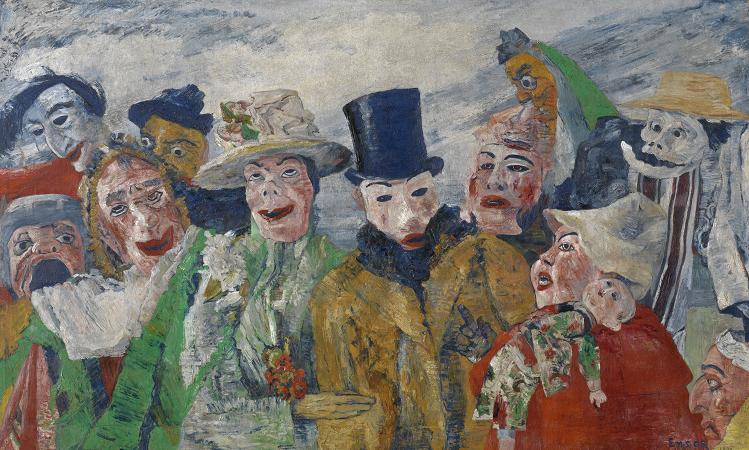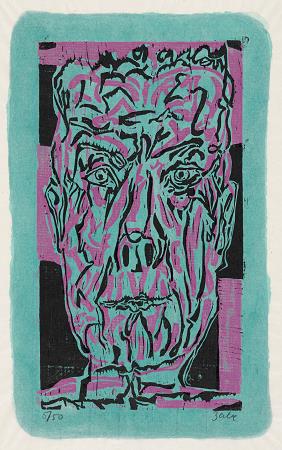Karl Zerbe (1903 - 1972). Karl Zerbe was a German-born American painter and a leading figure in the Boston Expressionist movement. He is known for his intense, emotive works that explore themes of suffering, resilience, and the human condition. His background in Germany during the turbulent Weimar and Nazi eras shaped his dark, textured style, often using encaustic techniques that add depth and intensity to his work. He was influenced by Georges Rouault, whose focus on humanity’s struggles resonated with Zerbe’s own experiences; Max Beckmann, whose expressive realism and themes of trauma shaped Zerbe’s style; and James Ensor, whose grotesque, symbolic use of masks inspired Zerbe’s haunting depictions. Notable examples of Zerbe’s work include Melancholia (Cambridge, Harvard Art Museums), reflecting his fascination with identity and the hidden self and Job (Boston, Museum of Fine Arts), which combines biblical symbolism with existential themes. Zerbe was born on September 16, 1903, in Berlin, Germany. The family lived in Paris, France, from 1904 to 1914, where his father was an executive in an electrical supply concern. In 1914, they moved to Frankfurt, Germany where they lived until 1920. Zerbe studied chemistry in 1920 at the Technische Hochschule in Friedberg, Germany. From 1921 until 1923 he lived in Munich, where he studied painting at the Debschitz School, mainly under Josef Eberz. From 1924 until 1926 Zerbe worked and traveled in Italy on a fellowship from the City of Munich. In 1932 his oil painting Herbstgarten was acquired by the National-Galerie, Berlin; in 1937, the painting was destroyed by the Nazis as Degenerate art. From 1937 until 1955, Zerbe was the head of the Department of Painting, School of the Museum of Fine Arts, Boston. In 1939, Zerbe became a U.S. citizen and the same year for the first time he used encaustic. He joined the faculty in the Department of Art and Art History at Florida State University in 1955, where he taught until his death. He was grouped together with the Boston artists Kahlil Gibran, Jack Levine and Hyman Bloom as a key member of the Boston Expressionist school of painting, and through his teaching influenced a generation of painters, including, among others, David Aronson, Bernard Chaet, Reed Kay, Arthur Polonsky, Jack Kramer, Barbara Swan, Andrew Kooistra, and Lois Tarlow. His works are thought significant because they record the response of a distinguished artist of basically European sensibility to the physical and cultural scene of the New World.
more...













